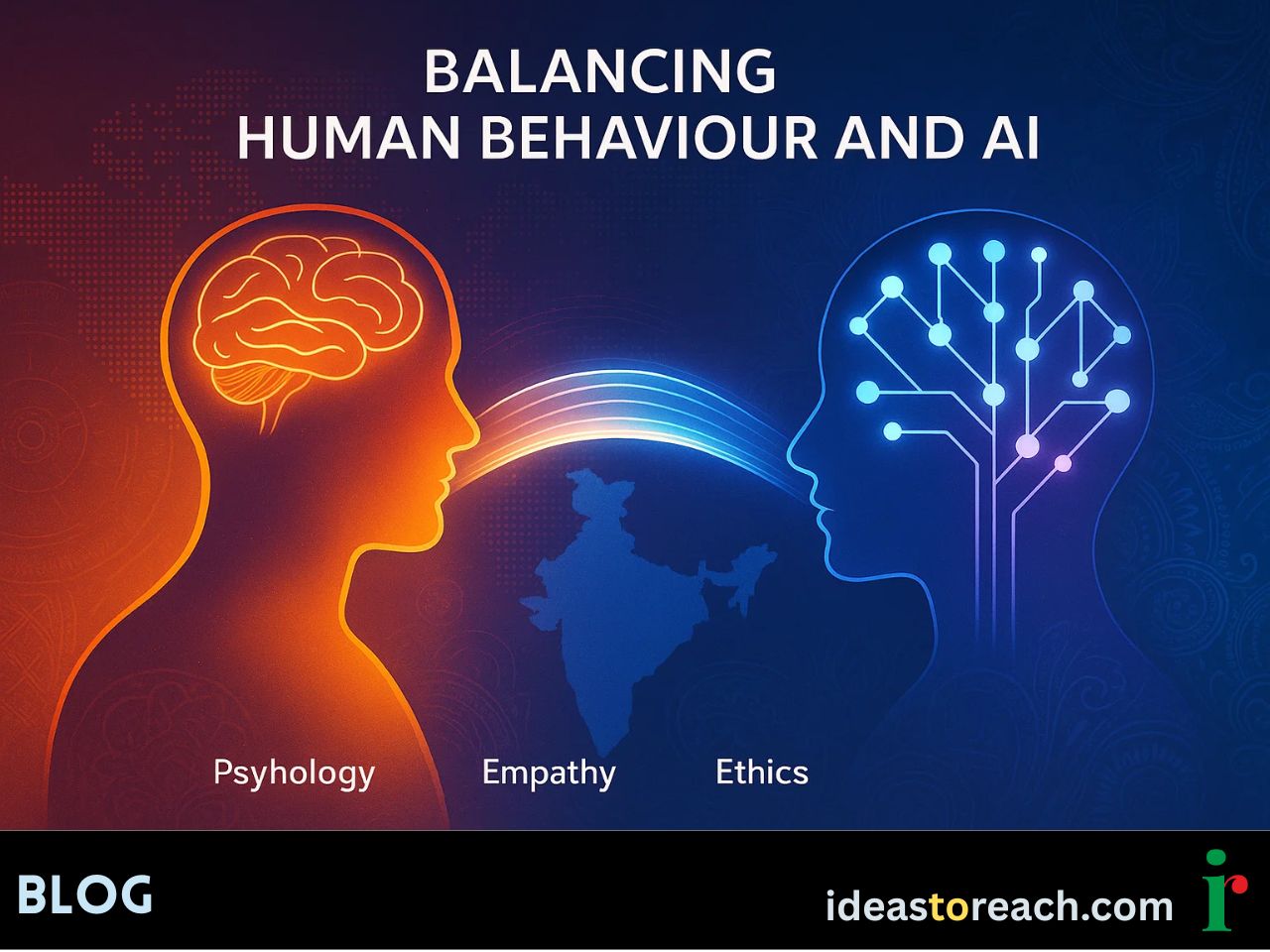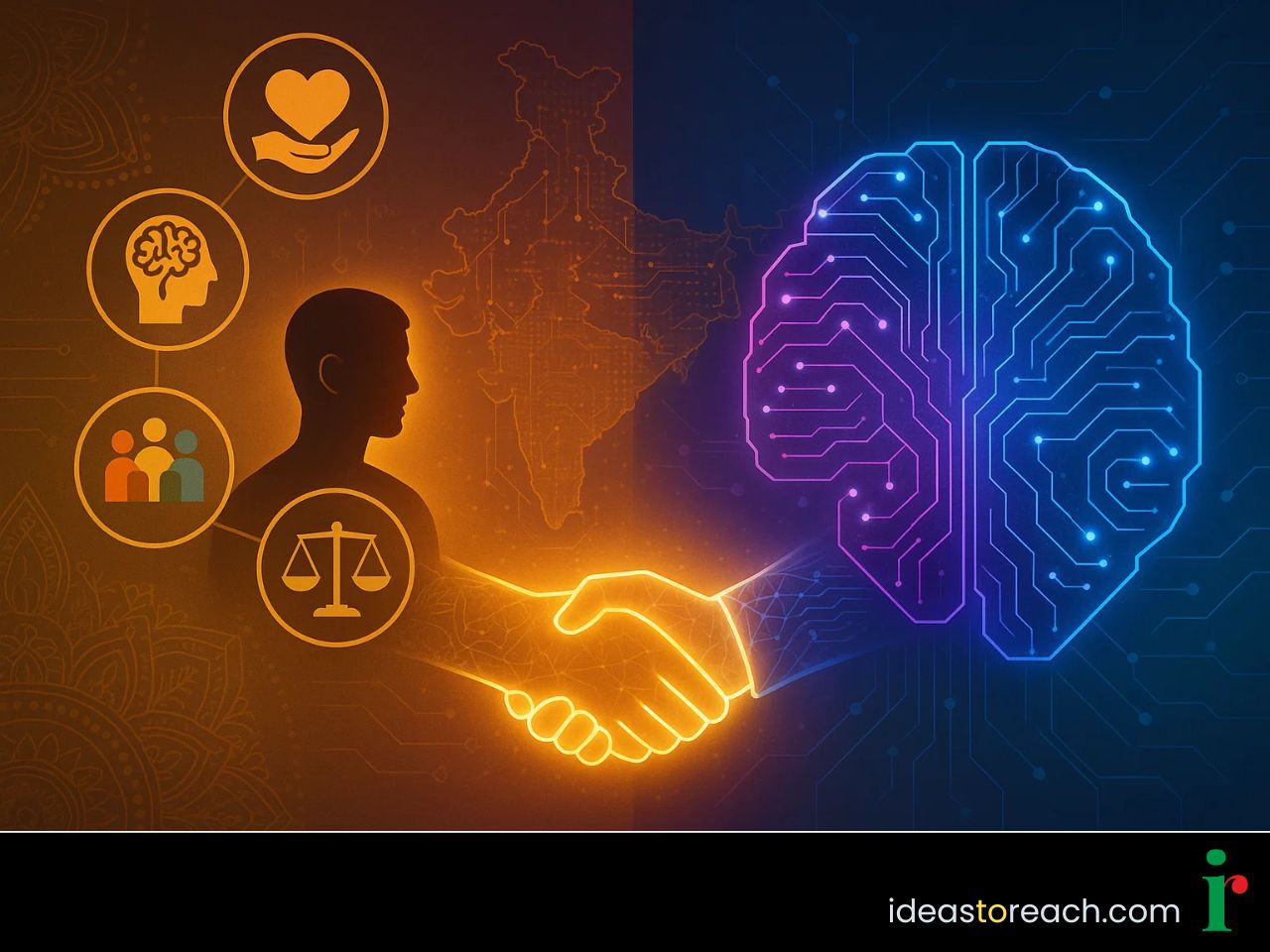
Artificial Intelligence (AI) dominates global conversations. From search engines like Google integrating generative AI to enterprises adopting AI assistants like Microsoft Copilot, the race to harness machine intelligence is accelerating. Yet, amidst all this momentum, one lesson is loud and clear: the future of artificial intelligence is not about making Large Language Models (LLMs) bigger but about making them more human.
This is where human-centric AI comes into play. By prioritising human behaviour, psychology, and ethics above all else, AI founders can ensure their technologies become not just robust systems, but genuine collaborators capable of augmenting human lives responsibly.
This blog outlines why human behaviour is more critical than raw model performance and how psychology plays a pivotal role in shaping AI solutions. It also highlights India’s position in this transformation and the future trends redefining the AI landscape beyond LLMs.
Human-centric AI is an approach where people, rather than algorithms, are placed at the heart of AI development. It focuses on building technology that aligns with people’s needs, emotions, and values, ensuring AI is explainable, ethical, and beneficial to users across societies.
Here are its core principles:
Forward-looking businesses are already working with digital strategy experts to implement these principles, helping position themselves as leaders in responsible AI adoption.
AI tools like ChatGPT and Google Gemini are extraordinary, processing petabytes of data and generating human-like responses. However, they still lack a proper understanding of human needs. In addition to text, humans interact with technology through culture, biases, and emotions. Without incorporating AI and psychology, these systems risk becoming useless abstract entities.
This is why entrepreneurs are aligning their marketing and development with a modern generative AI SEO strategy, ensuring outputs resonate with actual user behaviour, not just algorithms.
Despite their progress, LLM limitations are evident:
These challenges of current AI models make it clear that scaling LLMs is insufficient to create transformative, trusted tools. Instead, companies must incorporate explainability, ethics, and psychology frameworks into their models.
For example, the famous brand's decision to prioritise user control and transparency in Apple’s approach to AI search illustrates how big tech is also moving toward trust-first AI, not just size-first AI.
The connection between AI and psychology is becoming more influential. By leveraging concepts such as cognitive biases, behavioural economics, and emotional intelligence, AI can interact with humans in more relatable ways.
Here are the following ways:
Digital marketers are also turning behavioural psychology into an SEO advantage by leveraging AI for link building, using AI-generated insights to tailor outreach strategies aligned with natural human behaviour.

India offers one of the most dynamic stages for testing and scaling AI innovation. With hubs like Bangalore and Hyderabad, research-driven IITs, and initiatives such as Digital India, the country is driving technological adoption at scale.
Here’s how human-centric AI change India’s future of artificial intelligence:
These opportunities emphasise why companies must explore the role of structured data in AI search to ensure their solutions remain discoverable, accessible, and relevant to India’s multilingual population.
For founders seeking guidance on building human-centric AI models, the roadmap involves more than just coding neural networks. It includes human sciences, ethics, and constant feedback.
Practical guidelines include:
For digital marketers in India, future visibility also depends on embracing the future of SEO in an AI-driven world, where AI’s alignment with human search behaviour becomes critical.
For Indian companies, the AI user experience is just as necessary as the algorithm itself. Search engines and AI interfaces are evolving at a pace, which means enterprises must refine their digital strategies. The following are some practical steps:
By applying these strategies, businesses ensure their technology and content remain relevant in an AI-integrated web environment.
The future of artificial intelligence is headed toward hybrid systems that blend human insights with advanced algorithms. Key trends include:
This evolution reveals an evident truth that the next phase of AI innovation is not purely technological. But it’s deeply human.
The real future of artificial intelligence lies in recognising human behaviour over LLMs. Building bigger models without understanding people results in an unsafe system. The smarter path is adopting human-centric AI, where empathy, ethics, and explainability guide development. For India and beyond, this means creating inclusive healthcare tools, adaptive education platforms, and enterprise systems that earn trust and encourage widespread adoption.
When combined with innovative SEO strategies, including structured data and AI summaries, this human-centric approach empowers businesses to thrive in an AI-driven landscape. By designing AI that resonates with people first and machines second, leaders can pave the way toward a collaborative digital future. Explore the future of AI with human-centric innovation now!
Human-centric AI focuses on integrating human psychology, behaviours, and ethics into AI systems to make them safe, relatable, and genuinely beneficial.
Because human behaviour covers emotions, empathy, ethics, and needs. LLMs lack this ability, making a human-centric approach vital for safe AI adoption.
LLMs can produce biased or inaccurate responses and lack actual common-sense reasoning. They also fail to recognise emotional or social context, making them less reliable for real-world use.
In India, human-centric AI is poised to be a game-changer. It will transform education, healthcare, and enterprise adoption by creating accessible, inclusive AI tools that align with India’s multilingual and diverse population.